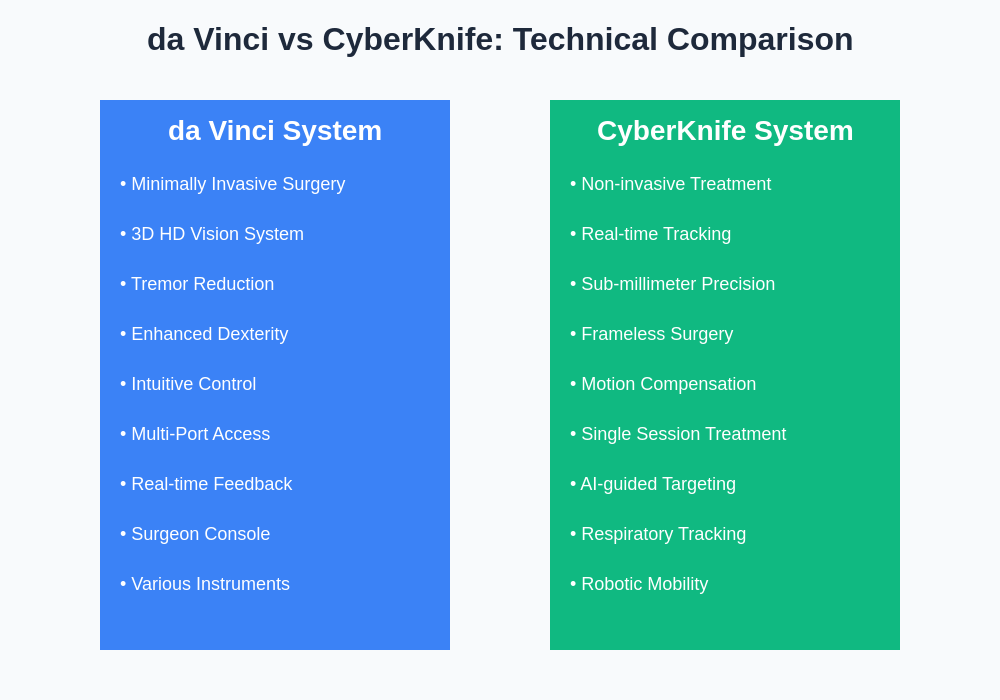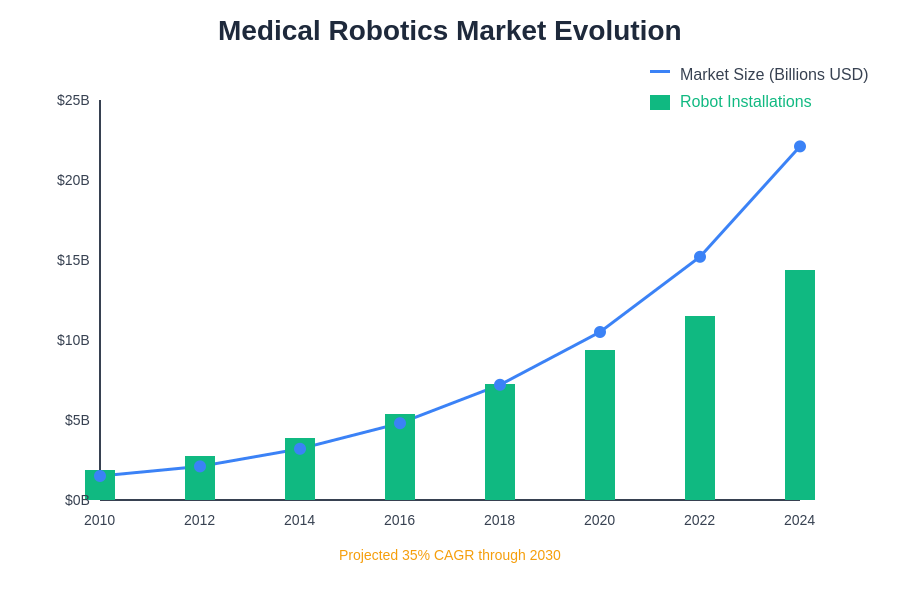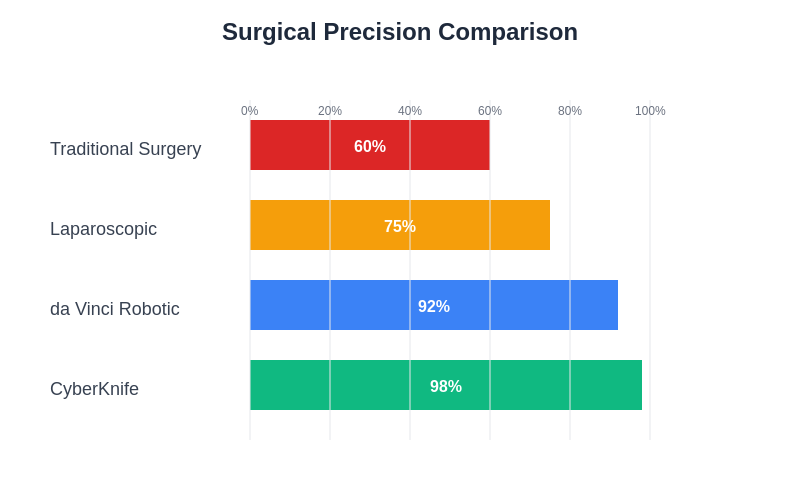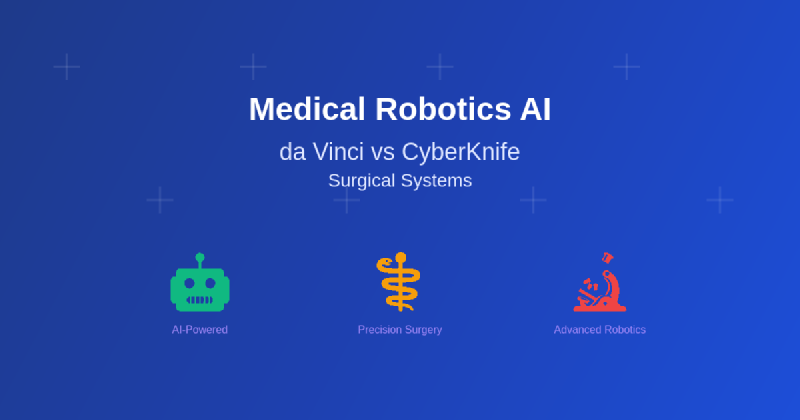The intersection of artificial intelligence and medical robotics has ushered in an unprecedented era of precision surgery, fundamentally transforming how complex medical procedures are performed and redefining the boundaries of what is possible in modern healthcare. At the forefront of this revolutionary transformation stand two pioneering surgical systems that have captured the attention of medical professionals worldwide: the da Vinci Surgical System and the CyberKnife Radiosurgery System. These remarkable technological achievements represent the culmination of decades of research and development in robotics, artificial intelligence, and medical engineering, offering surgeons capabilities that were once considered impossible.
Explore the latest developments in AI-powered medical technologies to understand how cutting-edge innovations are reshaping healthcare delivery and patient outcomes. The evolution of medical robotics from experimental prototypes to essential clinical tools demonstrates the profound impact that artificial intelligence can have when applied to life-saving medical interventions, creating new possibilities for treating previously inoperable conditions and improving surgical precision to levels that surpass human capabilities alone.
The Evolution of AI-Powered Surgical Robotics
The journey toward AI-enhanced surgical robotics began with the recognition that human limitations in precision, endurance, and visual acuity could be overcome through the integration of advanced mechanical systems with sophisticated artificial intelligence algorithms. The development of robotic surgical systems was initially driven by the need to perform complex procedures in challenging environments, such as minimally invasive surgeries where traditional techniques were limited by the constraints of human dexterity and the physical limitations of conventional surgical instruments.
The incorporation of artificial intelligence into these robotic systems has elevated their capabilities far beyond simple mechanical assistance, transforming them into intelligent partners that can analyze real-time data, predict optimal surgical pathways, and adapt to unexpected situations during procedures. This evolution represents a fundamental shift from reactive surgical tools to proactive systems that can anticipate challenges and provide intelligent guidance to surgeons throughout complex operations.
The technological foundation of modern surgical robotics relies heavily on machine learning algorithms that continuously improve performance through exposure to vast datasets of surgical procedures, patient anatomical variations, and outcome measurements. These AI systems can process multiple streams of information simultaneously, including high-resolution imaging data, real-time physiological monitoring, and historical patient records, to provide comprehensive situational awareness that enhances surgical decision-making and improves patient safety.
da Vinci Surgical System: Precision Through AI Integration
The da Vinci Surgical System represents a paradigm shift in minimally invasive surgery, combining advanced robotics with sophisticated artificial intelligence to enable surgeons to perform complex procedures with unprecedented precision and control. This revolutionary system translates the surgeon’s hand movements into precise micro-movements of miniaturized instruments, effectively eliminating the natural tremor of human hands while providing enhanced dexterity that surpasses what is possible with traditional laparoscopic techniques.
The AI components of the da Vinci system extend far beyond simple motion translation, incorporating intelligent algorithms that analyze surgical techniques, provide real-time feedback on instrument positioning, and offer predictive guidance based on extensive databases of successful procedures. The system’s machine learning capabilities enable it to adapt to individual surgeon preferences and techniques, creating a personalized surgical experience that improves over time as the AI learns from each procedure performed.
Discover advanced AI capabilities with Claude for comprehensive analysis and decision-making support in complex medical scenarios. The integration of AI into the da Vinci system has enabled breakthrough achievements in surgical precision, including the ability to perform intricate procedures on delicate tissues with minimal trauma, reduced recovery times, and improved long-term patient outcomes compared to traditional open surgical approaches.
The visual enhancement capabilities of the da Vinci system represent another significant advancement in AI-powered surgery, providing surgeons with high-definition, three-dimensional views of the surgical site that can be enhanced through artificial intelligence algorithms for improved contrast, depth perception, and anatomical structure identification. These AI-enhanced imaging capabilities allow surgeons to visualize critical structures more clearly, identify potential complications before they occur, and navigate complex anatomical regions with confidence and precision.

The comparative analysis of these two revolutionary systems reveals distinct strengths and applications, with each system optimized for specific types of surgical interventions and patient needs. Understanding these differences is crucial for medical professionals and patients when considering the most appropriate treatment approach for various conditions.
CyberKnife Radiosurgery: AI-Driven Precision Targeting
The CyberKnife Radiosurgery System represents a revolutionary approach to non-invasive cancer treatment, utilizing advanced artificial intelligence algorithms to deliver precisely targeted radiation therapy with sub-millimeter accuracy. Unlike traditional radiation therapy systems that require rigid patient immobilization and lengthy treatment sessions, the CyberKnife system employs sophisticated AI-powered tracking technology that can compensate for patient movement and physiological changes in real-time, enabling treatment of tumors in previously inaccessible locations.
The artificial intelligence engine that drives the CyberKnife system continuously monitors the patient’s position and the location of the target tumor through advanced imaging technology, automatically adjusting the radiation beam’s trajectory to maintain precise targeting throughout the treatment session. This AI-driven approach eliminates the need for invasive surgical procedures in many cases, offering patients a non-invasive alternative that can achieve comparable outcomes with significantly reduced recovery times and minimal side effects.
The machine learning algorithms incorporated into the CyberKnife system have been trained on thousands of treatment cases, enabling the system to optimize radiation delivery patterns based on tumor characteristics, patient anatomy, and treatment objectives. This intelligent optimization ensures that maximum radiation dose is delivered to the target tissue while minimizing exposure to surrounding healthy structures, achieving therapeutic outcomes that were previously impossible with conventional radiation therapy approaches.
The real-time adaptive capabilities of the CyberKnife system represent a significant advancement in personalized medicine, as the AI algorithms can adjust treatment parameters dynamically based on individual patient responses and anatomical variations. This personalized approach to radiation therapy has revolutionized treatment options for patients with complex tumors, offering hope for those who were previously considered untreatable using conventional surgical or radiation therapy methods.
Comparative Analysis: Applications and Advantages
The fundamental differences between the da Vinci and CyberKnife systems reflect their distinct design philosophies and intended applications, with each system offering unique advantages for specific medical conditions and patient populations. The da Vinci system excels in complex surgical procedures that require intricate manipulation of tissues and organs, such as cardiac surgery, urological procedures, and gynecological operations, where the enhanced dexterity and precision provided by robotic assistance can significantly improve surgical outcomes.
The CyberKnife system, in contrast, represents the pinnacle of non-invasive treatment technology, offering precise radiation therapy for tumors and lesions that are difficult or impossible to access through traditional surgical approaches. This system is particularly valuable for treating brain tumors, spinal lesions, and tumors located near critical organs where surgical intervention would pose significant risks to patient safety and quality of life.
Explore comprehensive research capabilities with Perplexity to access detailed clinical studies and comparative outcome data for various surgical robotics applications. The decision between these two approaches often depends on factors such as tumor location, patient health status, treatment objectives, and the availability of specialized medical expertise required to operate these sophisticated systems effectively.
The learning curve associated with each system varies significantly, with the da Vinci system requiring extensive training for surgeons to master the complex hand-eye coordination required for robotic surgery, while the CyberKnife system relies more heavily on treatment planning specialists and radiation oncologists who must understand the sophisticated AI algorithms that drive treatment optimization and delivery.
Artificial Intelligence Algorithms and Machine Learning Integration
The artificial intelligence algorithms that power both the da Vinci and CyberKnife systems represent some of the most sophisticated applications of machine learning technology in medical devices, incorporating advanced neural networks, computer vision systems, and predictive analytics to enhance surgical and treatment capabilities. These AI systems process vast amounts of data in real-time, including high-resolution imaging information, physiological monitoring data, and historical treatment outcomes to provide intelligent guidance and automated adjustments that improve procedure accuracy and patient safety.
The machine learning components of these systems continuously evolve through exposure to new cases and treatment scenarios, enabling the AI algorithms to recognize patterns, predict optimal treatment approaches, and identify potential complications before they occur. This continuous learning capability ensures that the systems become more effective over time, incorporating lessons learned from successful procedures and adapting to new challenges as they arise in clinical practice.
The integration of artificial intelligence into surgical robotics has also enabled the development of predictive models that can forecast patient outcomes, optimize treatment plans, and identify candidates who are most likely to benefit from robotic interventions. These predictive capabilities represent a significant advancement in personalized medicine, allowing healthcare providers to tailor treatment approaches to individual patient characteristics and optimize resource allocation for maximum therapeutic benefit.
The computer vision systems employed by both platforms utilize advanced image processing algorithms that can enhance visual information, identify anatomical structures, and provide augmented reality overlays that guide surgical procedures and treatment delivery. These AI-powered imaging capabilities have revolutionized surgical visualization, enabling procedures that were previously considered too risky or technically challenging to be performed safely and effectively.

The rapid growth and adoption of AI-powered medical robotics reflects the transformative impact these technologies are having on healthcare delivery, with increasing numbers of medical centers investing in robotic surgical capabilities to improve patient outcomes and attract top medical talent.

The precision advantages of AI-powered robotic systems are clearly demonstrated when compared to traditional surgical approaches, with both da Vinci and CyberKnife systems achieving remarkable accuracy levels that significantly exceed conventional surgical methods.
Clinical Outcomes and Patient Benefits
The clinical evidence supporting the effectiveness of AI-powered surgical robotics continues to accumulate, with numerous studies demonstrating significant improvements in patient outcomes, reduced complication rates, and enhanced quality of life for patients treated with these advanced systems. The precision and consistency provided by robotic surgery have resulted in reduced blood loss, shorter hospital stays, faster recovery times, and improved long-term functional outcomes compared to traditional surgical approaches.
For patients undergoing procedures with the da Vinci system, the minimally invasive nature of robotic surgery has translated into smaller incisions, reduced scarring, decreased post-operative pain, and faster return to normal activities. The enhanced precision provided by the robotic instruments has also enabled surgeons to preserve more healthy tissue and maintain critical anatomical structures that might be damaged during conventional surgery, resulting in better long-term functional outcomes and improved quality of life.
Patients treated with the CyberKnife system have experienced remarkable outcomes in cases where traditional surgery was not feasible or would have carried significant risks. The non-invasive nature of radiosurgery eliminates many of the complications associated with open surgery, including infection risk, anesthesia-related complications, and extended recovery periods. Many patients are able to return to normal activities within days of treatment, representing a dramatic improvement over traditional surgical approaches that might require weeks or months of recovery.
The psychological benefits of these advanced treatment options cannot be understated, as patients facing serious medical conditions often experience reduced anxiety and improved confidence when offered cutting-edge treatment alternatives that minimize invasiveness while maximizing therapeutic effectiveness. The availability of these advanced treatment options has also expanded treatment possibilities for elderly patients and those with comorbid conditions who might not be candidates for traditional surgical interventions.
Training and Implementation Challenges
The successful implementation of AI-powered surgical robotics requires comprehensive training programs that address both the technical aspects of operating sophisticated robotic systems and the clinical decision-making processes that determine when and how these technologies should be utilized. The complexity of these systems demands specialized expertise that goes beyond traditional surgical training, requiring surgeons and medical teams to develop new skills in human-machine collaboration and AI-assisted decision-making.
Training programs for robotic surgery must address the unique challenges of operating through robotic interfaces, including the development of hand-eye coordination in a virtual environment, understanding of haptic feedback systems, and proficiency in interpreting AI-generated guidance and recommendations. The learning curve for these systems can be significant, requiring dedicated practice time and mentorship from experienced robotic surgeons to achieve proficiency and ensure patient safety.
The implementation of these advanced systems also requires significant institutional commitment, including substantial capital investment, ongoing maintenance and support, and the development of multidisciplinary teams that can effectively utilize these technologies. Successful programs require collaboration between surgeons, engineers, technicians, and support staff who must work together to optimize system performance and ensure consistent delivery of high-quality care.
The integration of AI-powered robotics into existing healthcare workflows presents additional challenges, including the need to modify surgical schedules, develop new protocols for patient selection and preparation, and establish quality assurance programs that monitor system performance and clinical outcomes. These implementation challenges require careful planning and ongoing evaluation to ensure that the benefits of robotic surgery are realized while maintaining the highest standards of patient safety and care quality.
Economic Impact and Healthcare Accessibility
The economic implications of AI-powered surgical robotics extend far beyond the initial capital investment required to acquire these sophisticated systems, encompassing factors such as improved operational efficiency, reduced complication rates, shortened hospital stays, and enhanced patient throughput. While the upfront costs of robotic surgical systems can be substantial, many healthcare institutions have found that the long-term economic benefits justify the investment through improved patient outcomes and operational advantages.
The efficiency gains provided by robotic surgery often translate into reduced procedure times, decreased resource utilization, and improved surgical scheduling flexibility, enabling healthcare providers to treat more patients while maintaining high standards of care quality. The consistency and precision of robotic systems can also reduce the variability in surgical outcomes, leading to more predictable resource requirements and improved financial planning for healthcare institutions.
The question of healthcare accessibility remains a significant consideration in the adoption of advanced surgical robotics, as the high cost of these systems and the specialized training required to operate them may limit their availability to larger medical centers and affluent healthcare systems. Efforts to expand access to robotic surgery include the development of training programs, the establishment of regional centers of excellence, and the exploration of telemedicine approaches that could enable remote surgical assistance and consultation.
The potential for AI-powered surgical robotics to reduce long-term healthcare costs through improved outcomes and reduced complications represents a compelling argument for broader adoption of these technologies. As healthcare systems worldwide grapple with rising costs and increasing demand for medical services, the efficiency and effectiveness provided by robotic surgery may become essential tools for sustainable healthcare delivery.
Future Developments and Emerging Technologies
The future of AI-powered medical robotics promises even more remarkable advances as emerging technologies continue to push the boundaries of what is possible in surgical intervention and medical treatment. Current research and development efforts are focused on enhancing AI capabilities, improving human-machine interfaces, developing new surgical techniques, and expanding the range of conditions that can be treated with robotic assistance.
Advances in artificial intelligence are expected to enable more sophisticated decision-making capabilities, including real-time analysis of surgical progress, predictive modeling of patient outcomes, and automated adjustment of surgical parameters based on individual patient characteristics. These enhanced AI capabilities will further improve surgical precision while reducing the cognitive burden on surgeons and enabling more complex procedures to be performed safely and effectively.
The integration of emerging technologies such as augmented reality, advanced imaging modalities, and enhanced haptic feedback systems promises to create more immersive and intuitive surgical experiences that bridge the gap between robotic assistance and natural surgical techniques. These technological advances will enable surgeons to leverage the precision and consistency of robotic systems while maintaining the tactile feedback and spatial awareness that are essential for complex surgical procedures.
The development of smaller, more portable robotic systems may democratize access to advanced surgical capabilities, enabling their deployment in smaller healthcare facilities and remote locations where specialized surgical expertise may not be readily available. These advances could significantly expand the reach of robotic surgery and improve healthcare accessibility for underserved populations worldwide.
Regulatory Considerations and Safety Standards
The regulation of AI-powered medical robotics requires sophisticated oversight frameworks that can address the unique challenges posed by systems that combine complex mechanical devices with advanced artificial intelligence algorithms. Regulatory agencies worldwide have developed specialized protocols for evaluating the safety and effectiveness of robotic surgical systems, including rigorous testing requirements, clinical trial standards, and post-market surveillance programs that monitor long-term performance and safety outcomes.
The artificial intelligence components of these systems present particular regulatory challenges, as traditional medical device evaluation frameworks may not adequately address the dynamic nature of machine learning algorithms that continue to evolve through exposure to new data and clinical experiences. Regulatory agencies are developing new approaches to AI oversight that balance the need for safety assurance with the flexibility required to accommodate the adaptive nature of artificial intelligence systems.
Safety standards for robotic surgery encompass both technical requirements for system performance and clinical protocols for safe operation, including backup procedures for system failures, emergency protocols for unexpected situations, and comprehensive training requirements for operators. These safety frameworks must address the complex interactions between human operators and AI systems, ensuring that the benefits of automation are achieved without compromising the ability of medical professionals to intervene when necessary.
The ongoing evolution of regulatory frameworks for AI-powered medical devices reflects the recognition that traditional approaches to medical device oversight may need to be adapted to address the unique characteristics of intelligent systems that can learn and adapt over time. This evolution requires close collaboration between regulatory agencies, device manufacturers, and healthcare providers to ensure that appropriate safety standards are maintained while enabling continued innovation in medical robotics.
Global Adoption and Market Trends
The global adoption of AI-powered surgical robotics has accelerated dramatically over the past decade, driven by increasing recognition of the clinical benefits these systems provide and growing demand for minimally invasive treatment options among patients and healthcare providers. Market analysis indicates continued strong growth in the robotic surgery sector, with expanding applications, technological improvements, and increasing affordability driving broader adoption across diverse healthcare settings.
Regional variations in adoption patterns reflect differences in healthcare infrastructure, regulatory environments, economic factors, and cultural attitudes toward advanced medical technologies. While developed healthcare markets have led the initial adoption of robotic surgery, emerging markets are increasingly investing in these technologies as part of broader efforts to modernize healthcare delivery and improve patient outcomes.
The competitive landscape in medical robotics continues to evolve as established manufacturers enhance their existing platforms and new entrants develop innovative approaches to surgical automation and AI integration. This competitive environment is driving rapid technological advancement and may lead to more affordable and accessible robotic surgical options in the future.
International collaboration in research and development, clinical trials, and regulatory harmonization is facilitating the global expansion of robotic surgery capabilities and ensuring that advances in AI-powered medical robotics benefit patients worldwide. These collaborative efforts are particularly important for addressing the training and infrastructure requirements necessary for successful implementation of advanced surgical robotics in diverse healthcare environments.
The transformation of modern surgery through artificial intelligence and robotics represents one of the most significant advances in medical history, offering unprecedented capabilities for treating complex conditions while minimizing patient trauma and improving outcomes. As these technologies continue to evolve and mature, they promise to unlock new possibilities for medical intervention and redefine the standards of surgical excellence for generations to come.
Disclaimer
This article is for informational purposes only and does not constitute medical advice. The information presented is based on current understanding of AI-powered surgical robotics and their clinical applications. Patients should consult with qualified healthcare professionals to determine the most appropriate treatment options for their specific medical conditions. The effectiveness and suitability of robotic surgical procedures may vary depending on individual patient factors, medical history, and the expertise of the surgical team.
